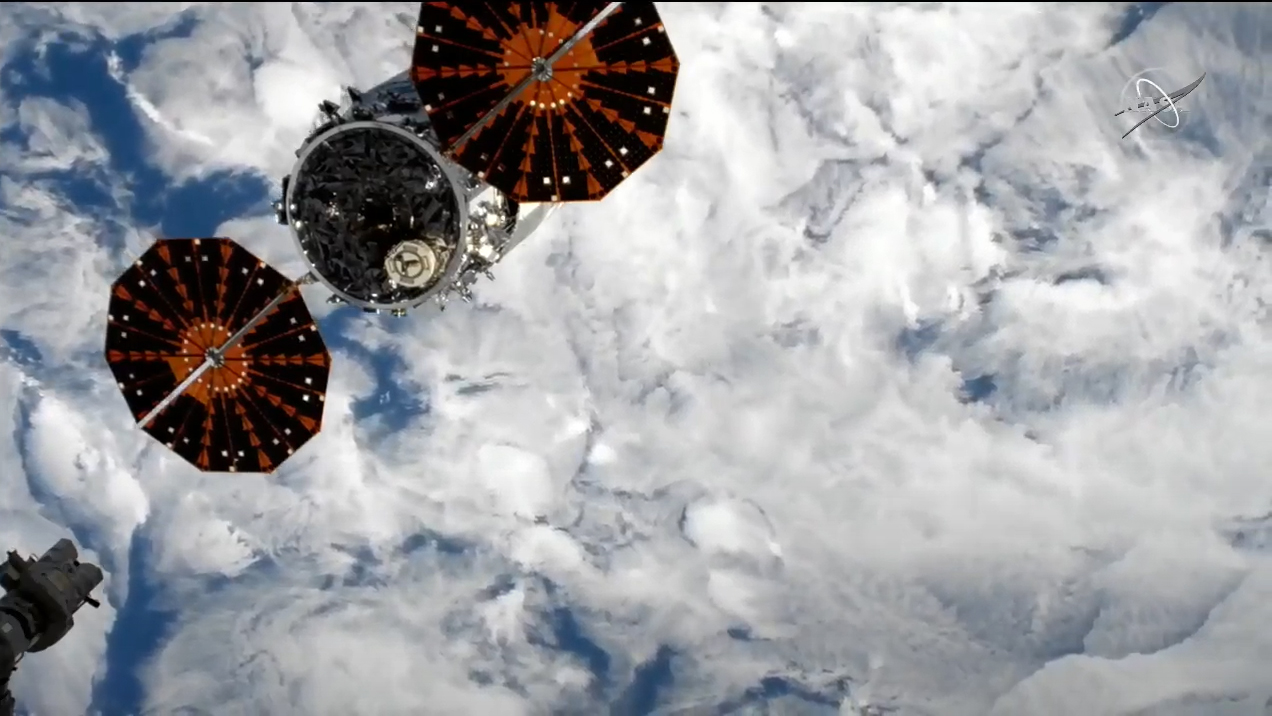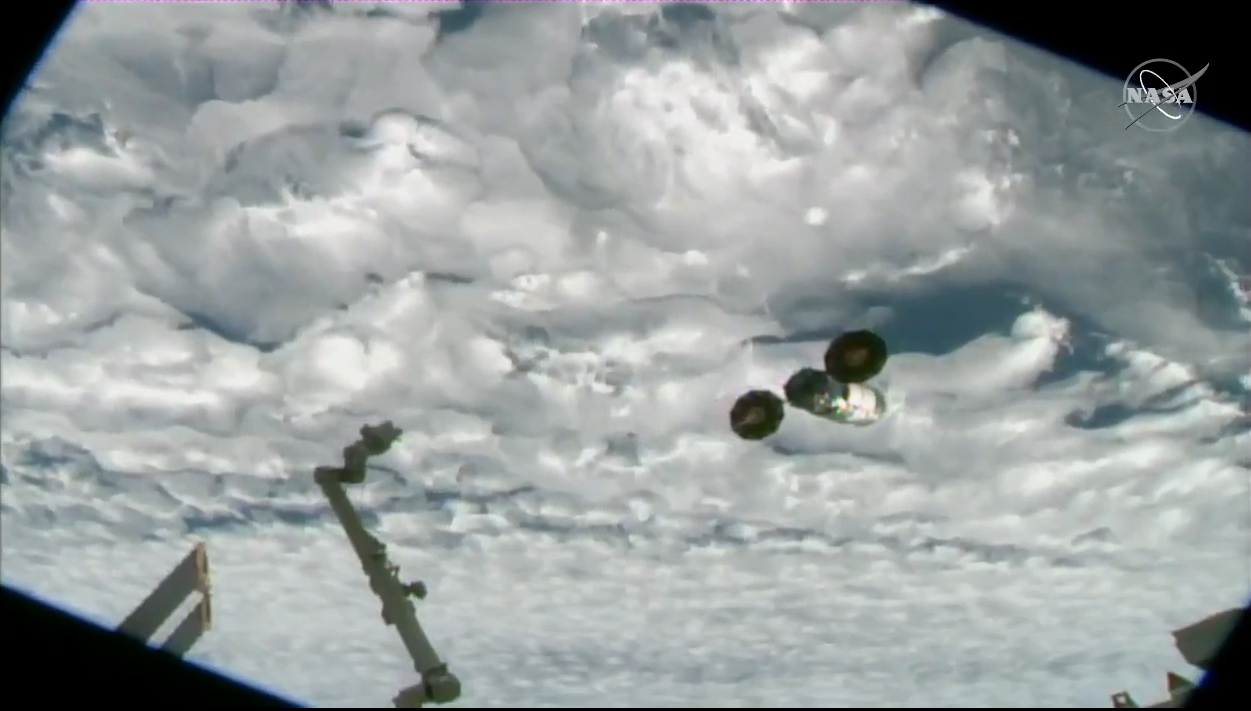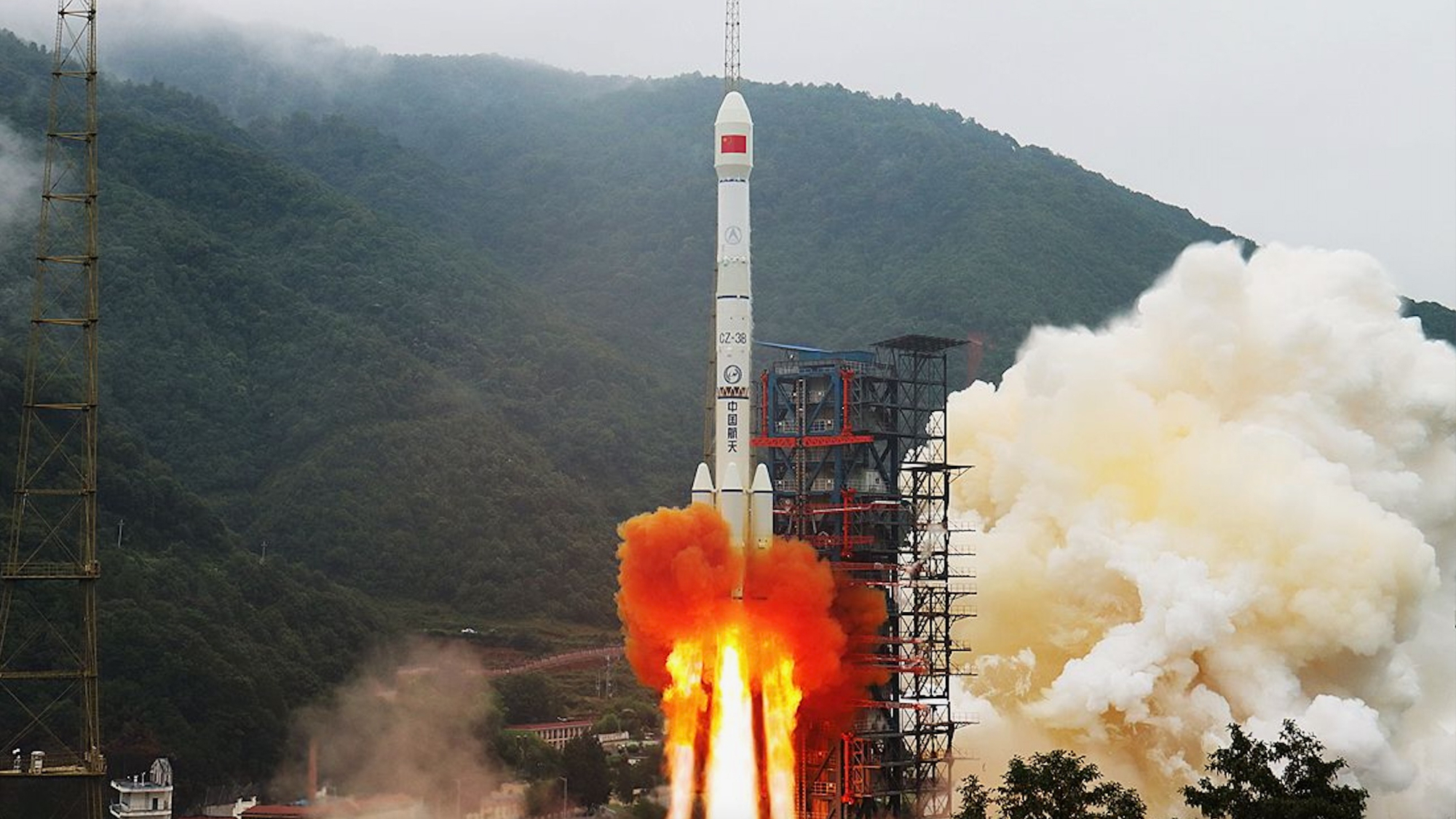Cygnus cargo ship leaves space station to test 5G tech and spark fires in orbit
The Cygnus NG-14 will fall to Earth on Jan. 26.
A Northrop Grumman Cygnus cargo ship successfully left the International Space Station for a new mission Wednesday (Jan. 6) to test 5G communications technology and spark fires in orbit.
The uncrewed Cygnus NG-14 spacecraft departed the space station at 10:10 a.m. EST (1510 GMT) after ground controllers released it from the Canadarm2 robotic arm. NASA astronaut Kate Rubins monitored the systems aboard Cygnus during its departure, from her perch on the space station.
Northrop Grumman launched the Cygnus cargo ship in October to deliver nearly 8,000 lbs. (3,600 kilograms) of scientific equipment, supplies, hardware and other things — including a space toilet — to the station. Astronauts then packed the ship full of trash, which will eventually burn up in the atmosphere in a planned (and destructive) reentry on Jan. 26.
Video: Watch the Cygnus NG-14 spacecraft cast off from the space station



But first, Cygnus will allow ground investigators to squeeze a little more science out of the mission – including the SharkSat 5G technology experiment and the Saffire-V fire investigation.
SharkSat will collect measurements and other telemetry from the spacecraft and send it down to Earth, with the aim of further developing Ka-band software defined radio. Ka-band is a less crowded part of the electromagnetic spectrum than the other bandwidths used in space, NASA said in a statement. The investigation is testing equipment such as integrated circuits, multiprocessor systems and digital receivers.
"Potential uses of the technology include various types of terrestrial 5G telecommunications, as well as space-to-space and space-to-ground communications, among others," NASA added. 5G is the newer and faster protocol for mobile technology that allows for the Internet of things and other applications, and it continues to be rolled out in the United States and worldwide despite the global pandemic.
Breaking space news, the latest updates on rocket launches, skywatching events and more!
The Cygnus spacecraft will also host Saffire-V, the latest in the Spacecraft Fire Safety (Saffire) investigations. Fire's behavior in microgravity is poorly understood, and scientists want to know more about how to predict the growth of fire — and how to monitor it and extinguish it — to improve the safety of future astronaut flights.
"Saffire-V examines fire growth in the range of pressures and oxygen concentrations expected in future exploration spacecraft," NASA said in a description of the Saffire series. "Saffire-V also demonstrates fire detection, combustion product monitoring, and post-fire cleanup using hardware similar to that planned for future human exploration spacecraft."
Cygnus is expected to operate for about two weeks on SharkSat operations before re-entering the atmosphere, NASA said in a description about SharkSat.
This Cygnus spacecraft is named after NASA astronaut Kalpana Chawla, the first female astronaut of Indian descent; Chawla and six other astronauts died during the Columbia space shuttle accident in 2003, in which the shuttle broke apart during reentry.
Follow Elizabeth Howell on Twitter @howellspace. Follow us on Twitter @Spacedotcom and on Facebook.
Join our Space Forums to keep talking space on the latest missions, night sky and more! And if you have a news tip, correction or comment, let us know at: community@space.com.

Elizabeth Howell (she/her), Ph.D., was a staff writer in the spaceflight channel between 2022 and 2024 specializing in Canadian space news. She was contributing writer for Space.com for 10 years from 2012 to 2024. Elizabeth's reporting includes multiple exclusives with the White House, leading world coverage about a lost-and-found space tomato on the International Space Station, witnessing five human spaceflight launches on two continents, flying parabolic, working inside a spacesuit, and participating in a simulated Mars mission. Her latest book, "Why Am I Taller?" (ECW Press, 2022) is co-written with astronaut Dave Williams.
